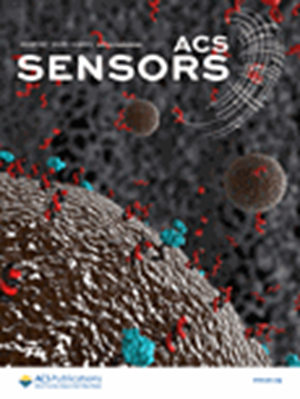Iron-Supported Asymmetric Iontronic Pressure Sensors with High Sensitivity and Extended Linearity
IF 8.2
1区 化学
Q1 CHEMISTRY, ANALYTICAL
引用次数: 0
Abstract
Iontronic pressure sensors (IPSs) are emerging as promising candidates for integration into wearable electronics and healthcare monitoring systems due to their high sensitivity and low power consumption. However, achieving high sensitivity across a broad linear pressure range remains a significant challenge. This study presents a novel IPS device with an asymmetric sandwich structure, which includes a three-dimensional electrode made of nickel manganese oxide/carbon nanotubes (NMO/CNT) and an embedded iron needles ionic dielectric layer. The proposed device demonstrates exceptional linearity over 1700 kPa, with a sensitivity exceeding 7700 kPa–1. It exhibits rapid response and recovery times in the millisecond range and maintains a consistent capacitive response over 15,000 loading–unloading cycles. Moreover, the device enables noncontact sensing in response to magnetic field variations, broadening its potential applications. The innovative IPS design effectively balances high sensitivity and a wide linear pressure range, rendering it suitable for various applications such as nonverbal communication aids and healthcare monitoring systems.

求助全文
约1分钟内获得全文
求助全文
来源期刊

ACS Sensors
Chemical Engineering-Bioengineering
CiteScore
14.50
自引率
3.40%
发文量
372
期刊介绍:
ACS Sensors is a peer-reviewed research journal that focuses on the dissemination of new and original knowledge in the field of sensor science, particularly those that selectively sense chemical or biological species or processes. The journal covers a broad range of topics, including but not limited to biosensors, chemical sensors, gas sensors, intracellular sensors, single molecule sensors, cell chips, and microfluidic devices. It aims to publish articles that address conceptual advances in sensing technology applicable to various types of analytes or application papers that report on the use of existing sensing concepts in new ways or for new analytes.
 求助内容:
求助内容: 应助结果提醒方式:
应助结果提醒方式:


